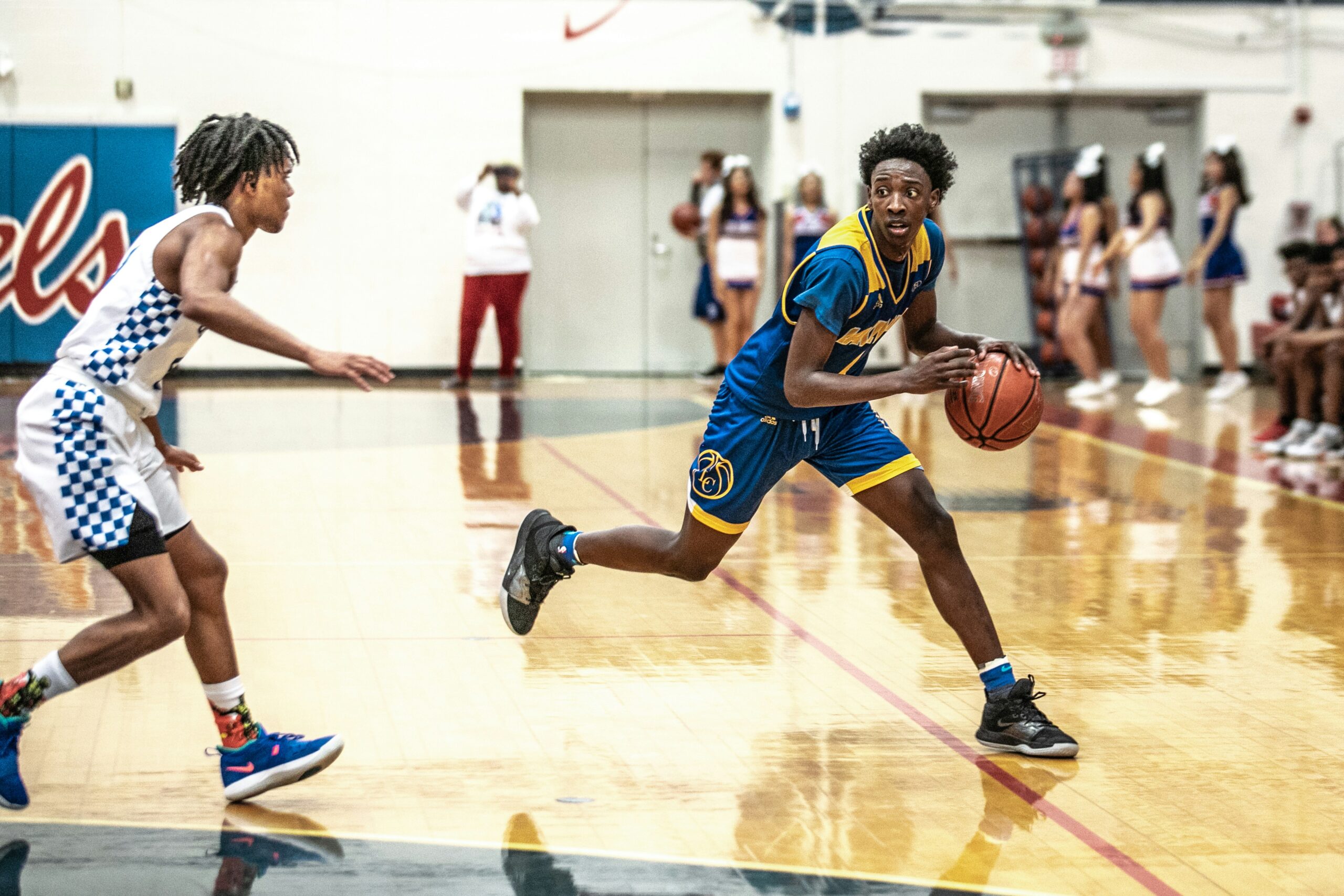If you’re coaching youth basketball, you’ve probably heard about the triple threat position. It’s one of those fundamental skills that every player needs to learn, but it can be tricky to teach to younger kids. The triple threat is basically a stance that lets players shoot, pass, or dribble effectively while staying balanced and ready to move.
Teaching this to young athletes takes patience and the right approach. Kids are still figuring out their coordination and building their basketball skills, so we need to break things down into simple steps. The goal is to build good habits early while keeping things fun and engaging. Some kids will pick it up quickly, while others might need more time – and that’s totally normal.
In this post, we’ll walk through what the triple threat position actually is, why it matters, and share some simple drills that work well with youth players. Whether you’re a coach, parent, or just want to help a young player improve, these tips will help you teach this essential skill.
What Exactly Is the Triple Threat Position?
Think of the triple threat position as a player’s home on offense. It’s the starting point for almost everything they’ll do with the ball. When a player catches the ball and gets into triple threat, they’re ready to do three things: shoot, pass, or dribble. That’s why it’s called “triple threat” – the defense doesn’t know what’s coming next.
Here’s what it looks like: The player holds the ball with both hands, usually around their hip or chest area. Their feet are about shoulder-width apart, knees slightly bent, and they’re in a balanced athletic position. From here, they can quickly move into any of their three options.
The beauty of this position is that it keeps defenders guessing. When a player is in good triple threat form, the defender can’t just focus on stopping one thing – they have to be ready for anything. This gives the offensive player a huge advantage and creates more opportunities to score or help their team.
Breaking Down the Basics
Let’s keep this simple and focus on the main pieces that make up a good triple threat position.
Feet and balance come first. Players should stand with their feet shoulder-width apart, with one foot slightly forward. The back foot is usually their pivot foot – for right-handed players, that’s typically the right foot. This setup gives them the best balance and lets them move smoothly into their next action.
How to hold the ball is super important. The ball should be held with both hands, close to the body but not pressed against the chest. Think of it like they’re protecting the ball from defenders while still being ready to use it. The ball should be at a comfortable height where they can quickly bring it up to shoot or move it to pass.
Body position ties everything together. Players should have their knees slightly bent, weight evenly distributed, and head up to see the court. This athletic stance helps them react quickly and move in any direction. It’s the same kind of position they’d use in other sports when they need to be ready to move fast.
What Youth Players Struggle With
Every coach sees the same mistakes over and over again. Don’t worry – these are totally normal, and with practice, kids can fix them.
Ball handling issues are probably the most common problem. Young players often hold the ball too loosely or let it drift away from their body. Some kids also swing the ball around when they get nervous or excited, which basically tells the defender exactly what they’re planning to do.
Footwork is another big one. Many kids stand with their feet too close together, which throws off their balance. Others forget about their pivot foot and end up traveling or getting stuck in awkward positions when they try to make a move.
Lastly, youth players can struggle with acting too quickly. Instead of taking a moment to look around and see their options, many young players immediately start dribbling or throw up a quick shot. This defeats the whole purpose of the triple threat position, which is supposed to give them time to make smart decisions.
Remember, kids develop at different rates. Some might be naturally coordinated, while others are still growing into their bodies. The key is to work with each player where they are and help them improve step by step.
Simple Drills That Actually Work
- Form check drill – Have players stand in the triple threat position and hold it for 10-15 seconds. Walk around and make small adjustments – fix their feet, adjust how they’re holding the ball, remind them to keep their head up. It’s basic, but it works. Great for beginners.
- Triple threat to action drill — Players start in triple threat, then on your signal, they do a specific move like shooting, passing to a target, or taking one dribble. Start slow and focus on smooth transitions.
- Beat the defense drill — Have a defender stand close (but not too close) while the offensive player maintains triple threat position. The defender can wave their hands or move around, but they can’t actually try to steal the ball. This helps players learn to stay calm under pressure.
- Decision time drill – Set up different scenarios where players have to choose what to do from triple threat. Maybe there’s an open teammate, or the defender is playing too close, or there’s a clear driving lane. Let them make the decision and talk through why they chose that option. Great for older youth players who can think more strategically.
Making It Stick
The key to teaching triple threat is consistency and keeping it positive. Practice a little bit every session rather than doing one long drill. Make it part of your warm-up routine so players get used to it.
- Keep it encouraging. When a player gets the position right, let them know! Positive feedback goes a long way with young athletes. If they mess up, just give them a quick tip and let them try again.
- Work with individuals. Every kid is different. Some might struggle with balance, others with ball security, and some might just need more time to process what you’re asking them to do. Take a few minutes to work one-on-one with players who need extra help.
- Make it game-like gradually. Start with no pressure, then add a passive defender, then make it more competitive. This progression helps players build confidence while learning to use the position in real situations.
Wrapping Up
The triple threat position might seem simple, but it’s one of the most important skills in basketball. When youth players learn it correctly, it sets them up for success in all other areas of the game. Remember to be patient, keep things positive, and work with each player’s individual needs. With consistent practice and the right approach, your young players will master this fundamental skill and become more confident, effective basketball players.
Want to give your young athlete extra help with basketball fundamentals? Athletes Untapped connects players with experienced private coaches who can provide personalized instruction on skills like the triple threat position. Find a basketball coach in your area today.




